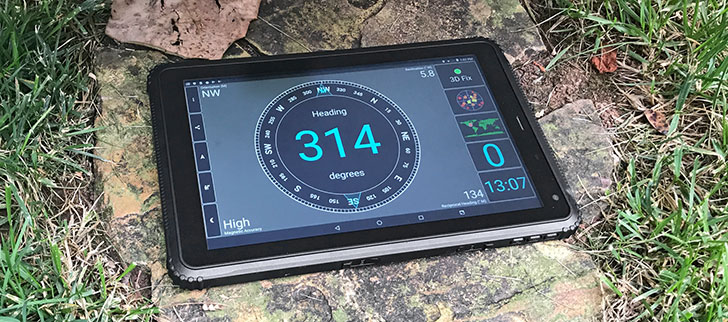|
Teguar TRT-A5380-10S
A strong, durable (yet slim and light) rugged 10-inch Android tablet for when a fragile consumer tablet just won't do
(by Conrad H. Blickenstorfer)
Teguar is not necessarily a familiar name when contemplating the purchase of a rugged tablet. That may change as the Charlotte, North Carolina, based company is a hard-charging provider of highly customizable industrial and medical computers that's rapidly moving up on the Inc. 5000 list.
Launched in 2010 by a Swiss native with years of experience in industrial computer systems, Teguar combines American adaptability and technological leadership with Swiss precision, quality, and attention to detail. In this review we're examining their slim Android-based rugged 10.1-inch tablet, which is also available in a smaller 8-inch version.
With smartphone displays now approaching seven inches, 10-inch tablets remain popular. They provide much more display real estate than even the biggest phones, yet are still small enough to fit almost anywhere. The image below shows the Teguar TRT-A5380-10S from the front and all four sides.
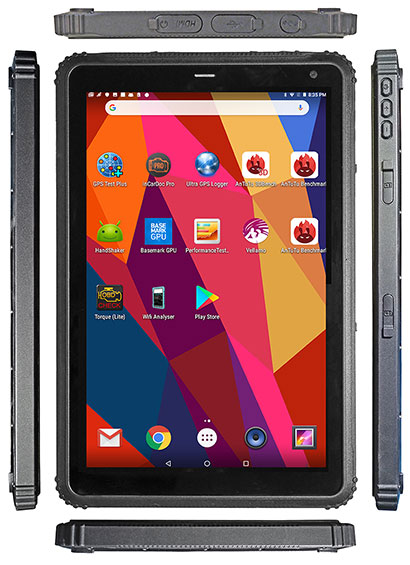
Measuring 10.4 by 7.1 inches, the TRT-A5380-10S has a footprint barely larger than the distinctively non-rugged 10.5-inch iPad Pro. It's a slender (for a rugged tablet) 0.63 inches thick and weighs just two pounds.
While the tablet form factor doesn't make it easy to make any sort of differentiating styling statements, Teguar managed to integrate subtle design cues that set this tablet apart. There's a slightly protruding lip for protection around the bezel. There are discrete ribs that indicate extra corner protection. And there's a unique carbon fiber-looking finish on the back plate.
There isn't much in terms of I/O and controls. Just a micro USB port and a mini HDMI port for wired connectivity (USB Type-C would have been nice), 3.5mm audio, externally accessible micro SD card and micro SIM card slots, and a power jack.

All have tightly fitting individual protective plugs that (unlike most such plugs) nicely pivot out of the way when ports are used.
Even compact lightweight tablets like the Teguar TRT-A5380 are much larger than smartphones, so a bit of extra help in carrying them around and using them on the job is appreciated. Teguar does that by offering a hand strap that screws onto the back of the tablet.
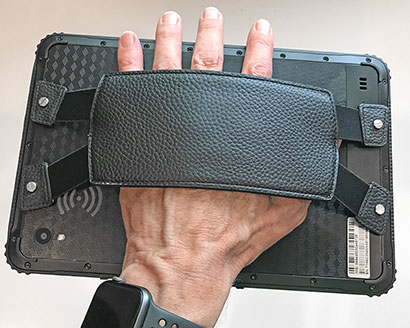
Good display
In modern electronics, the display is everything. And that especially goes for those that will be used under greatly varying conditions, ranging from office to anywhere out there in the field. The Teguar TRT-A5380's screen measures 10.1 inches diagonally and has 1280 x 800 pixel resolution. That makes for a 16:10 aspect ratio, which puts in between the iPad's traditional and rather squarish 4:3 displays, and current smartphones which seem to get wider every year.
In terms of resolution, 1280 x 800 pixel on a 10.1-inch screen makes for 149 pixels per inch. That's better than the original iPad, but far less than today's smartphones and most consumer tablets. It is certainly good enough, but it's not the "retina" sharpness desirable for some tasks.
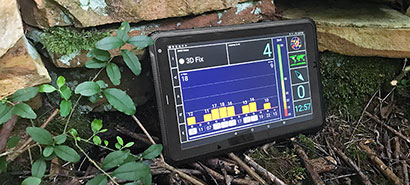
Like almost all modern mobile devices, the TRT-A5380 uses capacitive multi-touch. It's as smooth and responsive as users have come to expect. It's a glossy screen, as most are these days, and uses Asahi's "Dragontrail" glass that's similar to Corning's Gorilla Glass in its damage resistance and scratch protection.
Any device that's being used outdoors must be bright enough to be used in daylight, and it must do so without burning through a battery charge too quickly. Brightness — luminance — is measured in nits. Laptops usually score around 250 nits, tablets 300 to 500, modern smartphones 400-550, and some rugged gear can go to 1000 and beyond. In our luminance testing, the Teguar tablet scored 470, making it easily viewable and usable outdoors.
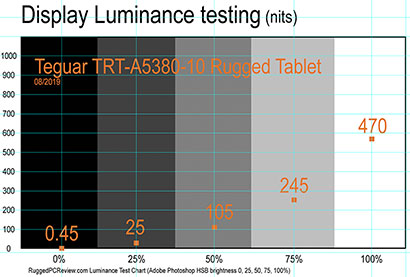
Equally important, especially in a tablet, is that the display remains viewable from any angle, and that it won't change contrast, brightness and colors when viewed from angles. The TRT-A5380 passes that test easily.
Built to last and take a beating
Unlike many Windows-based tablets, Android tablets usually don't have access panels for expansion modules and such. Teguar's TRT-A5380 is no exception. So the only reason to ever open a unit would be to change the integrated internal battery. We took a look inside to examine the inner design and layout of the TRT-A5380.
Opening up the tablet is easy as long as one has a Torx T6 screwdriver bit to undo a couple dozen small screws. Once those are out, the two black polycarbonate plastic halves easily come apart, with not a single wire or ribbon cable between the sides. Sealing between the halves is via a tongue-and-groove design with a precision-cut replaceable 3D rubber pressure seal.
Unlike lesser tablets, the Teguar TRT-A5380 has a full-size and very solid aluminum or magnesium chassis that extends over the entire footprint of the tablet. This makes for a very strong (and meticulously designed and manufactured) structure and foundation for all electronics.
The pictures below show the TRT-A5380 opened up. Click on the image for a full-size version.

The rechargeable internal 3.7V, 10,000mAH Lithium-Ion Polymer battery packs 37 watt-hours, which Teguar says is good for up to 15 hours on a charge. The battery assembly is glued/fastened to the metal frame, but it's easily accessible and replacement should not be too difficult.
The interior of the tablet itself is spacious and did not require excessive electronics miniaturization. The battery, the L-shaped motherboard, a small daughterboard, and a few modules and antennae all neatly fit into their spots on the custom-designed metal frame. All I/O is edge-mounted on two sides of the tablet. There are no separate, replaceable modules (such as for RAM, mass storage, wireless connectivity, etc.) as are usually found on PC boards.
The TRT-A5380 is, like virtually all ARM/Android devices, a fanless design. Whatever thermal management is required uses the big metal frame that acts as a heat spreader and dissipator. Overall, the interior of the Teguar tablet impresses with solid construction, strong materials, and a logical layout. Most tablets look pretty much the same on the outside. For ruggedness and reliability on the job, it's the inside that matters. This Teguar's inside is a solid, impressive foundation.
Performance
Assessing the performance and capabilities of an Android device is quite different from that of a Windows/Intel device. Those are fairly easily determined. After reviewing and benchmarking Intel-based Windows devices for many years, one look at the spec sheet is usually enough for us to get an idea of where a device fits into the overall performance landscape.
 For the TRT-A5380, Teguar chose the 64-bit 1.3GHz octa-core ARM Cortex-A53 MT8783 processor from MediaTek, a chip used in a variety of brand-name LTE-capable Android tablets. The MT8783 chip is based on the ARMv8 instruction set, and the Cortex-A53 is the successor to the popular Cortex-A7. For graphics, the MT6735 also includes an ARM Mali-T720 3-core GPU running at up to 700MHz. For the TRT-A5380, Teguar chose the 64-bit 1.3GHz octa-core ARM Cortex-A53 MT8783 processor from MediaTek, a chip used in a variety of brand-name LTE-capable Android tablets. The MT8783 chip is based on the ARMv8 instruction set, and the Cortex-A53 is the successor to the popular Cortex-A7. For graphics, the MT6735 also includes an ARM Mali-T720 3-core GPU running at up to 700MHz.
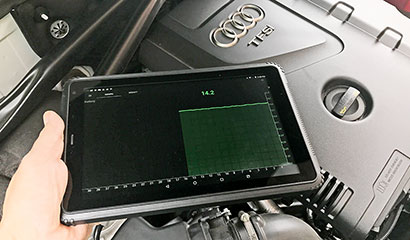
In our benchmark testing (PassMark Mobile (4,000), AnTuTu (47,283), and Vellamo (1,611 multi-core)), the Teguar TRT-A5380 doesn't match the blistering performance of state-of-the-art consumer smartphones, nor did we expect that. But it scored roughly on par with other rugged-market Android tablets we've tested.
Cameras up to the job
Like virtually all modern tablets, the Teguar has front (2-megapixel) and rear (8-megapixel) cameras. The included Android Camera app doesn't provide many options and settings, albeit substantially more than what the standard Windows Camera app offers.
The purpose of cameras integrated into tablets designed to be used on the job should be to alleviate the need to carry along a dedicated camera or use a modern smartphone for taking pictures. The cameras in the Teguar TRT-A5380 can do that. Click on the sample picture compilation to see it in full size.
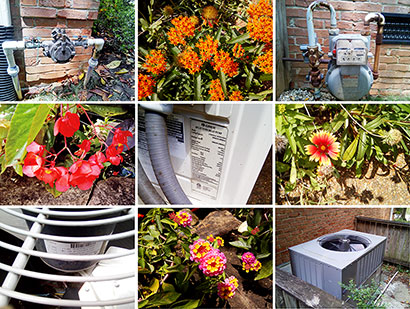
Ruggedness
The purpose of a rugged tablet is to bring computing power to the field and on the job, even if that job is in an inhospitable environment. That means the device must be able to handle the kind of spills, bumps, grinds and splashes that might happen out there. Consumer tablets can't generally do that, not even in a case.
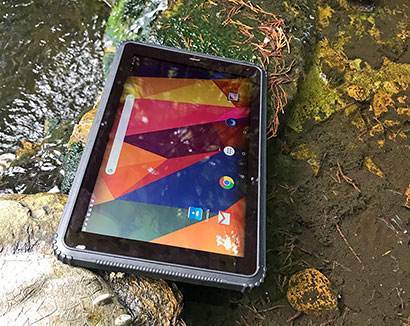
The TRT-A5380 is much better equipped to hold up. Its design and build are far stronger and far less vulnerable than any consumer tablet. The tablet has a wide operating temperature range of -14 to 122 degrees Fahrenheit (-10° to +50°C), with optional extra protection down to -4 degrees Fahrenheit optionally available.
Ingress protection is at the IP65 level. That means the tablet is fully dustproof and can also handle low pressure water jets from all directions. If that's not enough, Teguar offers optional IP67 sealing which makes the tablet immersible.
The display uses high-strength protective glass, and the screen surface has a raised lip around it that provides extra protection against breakage. Teguar lists a variety of strong cleaning agents that can be used on the tablet.
For other ruggedness criteria the documentation claims compliance with the MIL-STD-810G standards. There should be specifics in the documentation and spec sheet.
Bottom line: Teguar TRT-A5380-10S rugged tablet
Where does this Teguar 10-inch Android tablet fit in? For one thing, it increases the one-stop-shopping appeal of Teguar's main business of providing cutting-edge industrial and medical computer solutions. It's always nice to be dealing with a trusted vendor one already does business with.
Most of Teguar's computers are Windows-based industrial-grade panels and box PCs. Android, however, dominates the smartphone market. Almost universal familiarity with Android often makes it feasible/desirable to go with suitably tough and durable Android-based tablets instead of more complex Windows-based solutions. The 10-inch TRT-A5380 and its smaller 8-inch sibling are perfectly suited for that job. -- Conrad H. Blickenstorfer, August 2019
|



